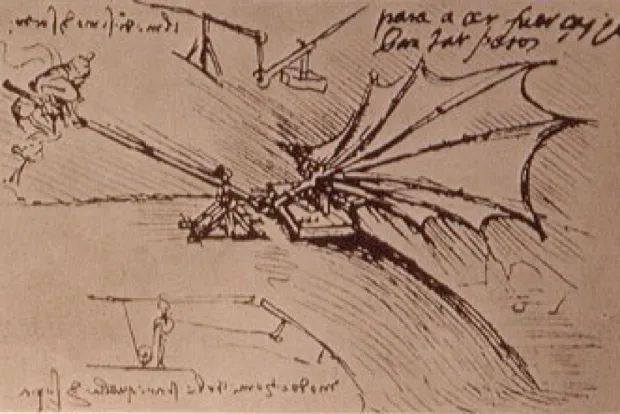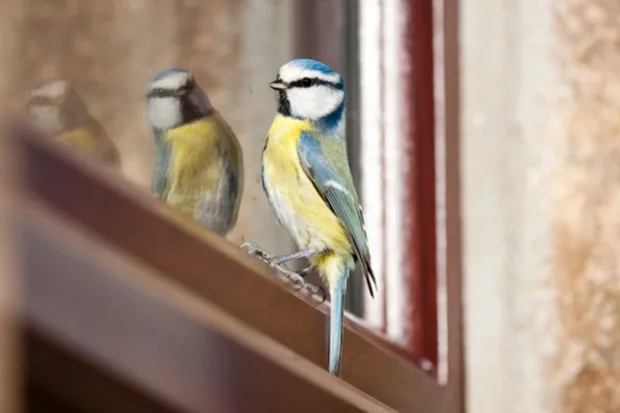The Pyramids, skyscrapers, supersonic flight - despite the incredible ingenuity and engineering ability humans have demonstrated over past millennia, we are continually looking for new inspiration and ways to improve our designs. Givenevolutionhas the benefit of millions of years of trial and error to perfect its designs in nature, it is logical that human construction can benefit in drawing from its influence.
This approach to human innovation, via emulating nature, is calledbiomimetic designand has inspired many of our greatest creations -from buildings to bionic cars, here are some of the favourite examples.
Whale wind turbines

The humpback whale weighs an astonishing 36 tonnes, yet it is one of the most elegant swimmers, divers and jumpers in the sea. As first researched by Frank Fish, a biomechanic, these aerodynamic abilities are greatly attributed to the bumpy protrusions on the front of its fins, called tubercles.
Similar to the processes of aircraft wings,whalesuse their fins at different steepening angles to increase their lift. Too much tilt though, and the opposite will occur and they’ll stall – a loss of lift due to current turbulence and the formation of eddies in the water.
By comparing bumpy blades to smooth-edged ones, Fish and colleagues found that stalling occurs at amuch higher anglewith tubercles – an increase by nearly 40 per cent, in fact. They deduced this higher angle proficiency was beneficial for the whale in allowing it to manoeuvre in tight circles, hence how they circle and entrap their prey in a‘net’ of bubbles.
Further testing by Fish also revealed that serrated-edge wind turbines proved to be more efficient and quieter than the typical smooth blades. This led to the formation ofWhalePower tubercle technology, a company developing a range of tubercle technology products, with a range of blade applications, including wind turbines, hydroelectric turbines, irrigation pumps, ventilation pumps.
Box fish and the Bionic car
Despite the cumbersome appearance of the boxfish, it has a low flow resistance and adrag coefficientof an astounding 0.06. In comparison, penguins swimming through water have a coefficient of 0.19.
In 2005, inspired by the great structural strength and low mass of the boxfish, Mercedes Benz developed the Bionic Car, which reported to reduce drag, have great rigidity, low weight and a significantly lower fuel consumption than traditional cars.
Of course just because something seems like the perfect design in the natural world, doesn’t necessarily mean it works out that way in industrial design. You might have noticed the distinct lack of Bionic Car-shaped vehicles on the road, which is probably because a 2015 study found that the shape of the boxfishdidn’t reduce dragat all and actually made it more unstable - great for a box fish with 50 million years of evolution to perfect the art of being a boxfish, less good for a people carrier.
Kingfisher and the Shinkansen

Japan is renowned for the incredible speed and efficiency of their trains. However, with speeds in excess of 300km/h, bullet trains presented a problem in creating huge sonic boom every time they emerged from a tunnel. An unfortunate result of changing air pressures, this source of noise pollution greatly disturbed local residents and placed pressure on engineers to address the problem.
This they did, and drew inspiration from a rather unlikely source: the Kingfisher. Kingfishers are masters in travelling between the mediums of air water, with very little splash. Just like the Kingfisher, theShinkansen bullet trainis equipped with a long beak-shaped nose. This significantly reduces the amount of noise the train makes, but also uses 15 per cent less electricity, and travels 10 per cent faster than before.
Velcro
George de Mestral was inspired to invent Velcro after noticing how easy it was for burrs to stick to his dog’s hair. Upon studying them under a microscope, he noticed the simple design of tiny hooks at the end of the burr’s spines. These were able to catch anything with a loop, such as fur and fabric, and he went on to replicate this synthetically. His two-part velcro fastening system uses a strip of loosely looping nylon opposite a strip of tiny hooks, and has since been prolific in its range of applications and popularity.
Birds and flight

Perhaps one of the most famous examples of biomimicry is evident in the history of human flight.Leonardo daVinciis largely recognised as a key instigator in its development, as he made the first real studies on birds and human flight in the 1480s. His original design, called the Ornithopter, was never created, but was a principal in showing how man could potentially fly.
Several designers and engineers worked on this bird-inspired concept in the following years, for instance Otto Lilienthal completed more than 2,500 flights in a glider, but it was not until 1903 that the Wright brothers flew the first powered, heavier-than-air machine in a controlled and sustainableflight. This technology went on to define the aerial developments of 20th century and the technology seen in the air today.
Lotus-inspired hydrophobia
Thelotus effect, otherwise known as superhydrophobicity, is the effect seen on the leaves of the Lotus flower, where water is not able to wet the surface and simply rolls off. This high repellence is due to the nanostructure of the plane, where micro-protrusions coated in waxy hydrophobic materials repel the water. This is also a self-cleaning mechanism as dirt particles also stick to the water molecule.
Copying this process,CeNanodevelopednanotol- a hydrophobic (water-repelling), lipophobic (fat-repelling), and oleophobic (oil-repelling) sealant that can be sprayed to substances to create their own superhydrophobicity. The applications of these are huge, and amazingly satisfying to watch.
Water collecting beetles
Probably one of our favourite creatures from David Attenborough’s epic new seriesPlanet Earth II, the African Namib Desert Beetle collects water by condensing fog into water droplets in the bumps on its shell. As water-repellent ridges line the bumps, they progressively direct a channel of water toward the beetle’s head so it can drink.
Inspired by this, researchers from the Massachusetts Institute of Technology (MIT)replicated this structurewith glass and plastic. This enabled them to collect minute amounts of water just like the beetle’s back, but also provided them with the grounding for other applications aside from fog harvesting in a desert. For example, building cooling devices, or use in cleaning up toxic spills.
Biomimetic Architecture
TheEastgate Centrein Harare, Zimbabwe, exemplifies biomimicry at an incredible scale. The green architecture is the country’s largest office and shopping complex, and uses no conventional air-conditioning or heating, yet it stays a regulated temperature all year.
ThearchitectMick Pearce was inspired by termite mounds to create the building, as they demonstrate an ingenious structure that self-cools. This is due to their ventilation system, involving a process of opening and closing vents throughout the mound that regulate the convection currents of air. The Eastgate Centre uses a similar process, as it draws air in and warms/cools it with the building mass. This is dependent on which medium is hotter – the building or the air. The innovative building is quoted to consume 10 per cent less energy than same-sized conventional buildings!
Bird-safe glass

It is estimated that 100 million birds die every year as a result offlying into glass, and the reason is obvious - they simply do not recognise the transparent structure as a physical barrier. To address this problem, a company developed biomimeticOrnilux Birdsafe Glass, drawing inspiration from the UV reflective strands in spider webs, which birds see and therefore avoid. This is a clear mutual benefit for both species, and so Ornilux sought to replicate this with their criss-crossing UV glass.
A shark skin coat
By examining the biological processes of shark skin, NASA scientists were able to copy the microscopic patterns of dentricles to create a ‘riblets’ film. Comparable tosharkskin dentricles, this film reduces drag and deters microorganisms (such as algae) attaching to the surface. This was highly advantageous to marine vessels, such as the sailboatStars & Stripes, which was coated with NASA riblets and won the 1987 America’s Cup in the process.
However, the environmental benefits of riblets are broad in reducing friction as it conserves energy and money (e.g. in fuel). This has led to its further development and utilisation in coatings for ship's hulls, submarines, aircraft, and even swimwear for humans.
There is also a huge financial incentive, as reducing drag can save thousands of pounds. For instance,researchers estimatethat a 1 per cent drag reduction can save one aircraft an approximate 25,000 gallons of fuel per year.
Read more:
